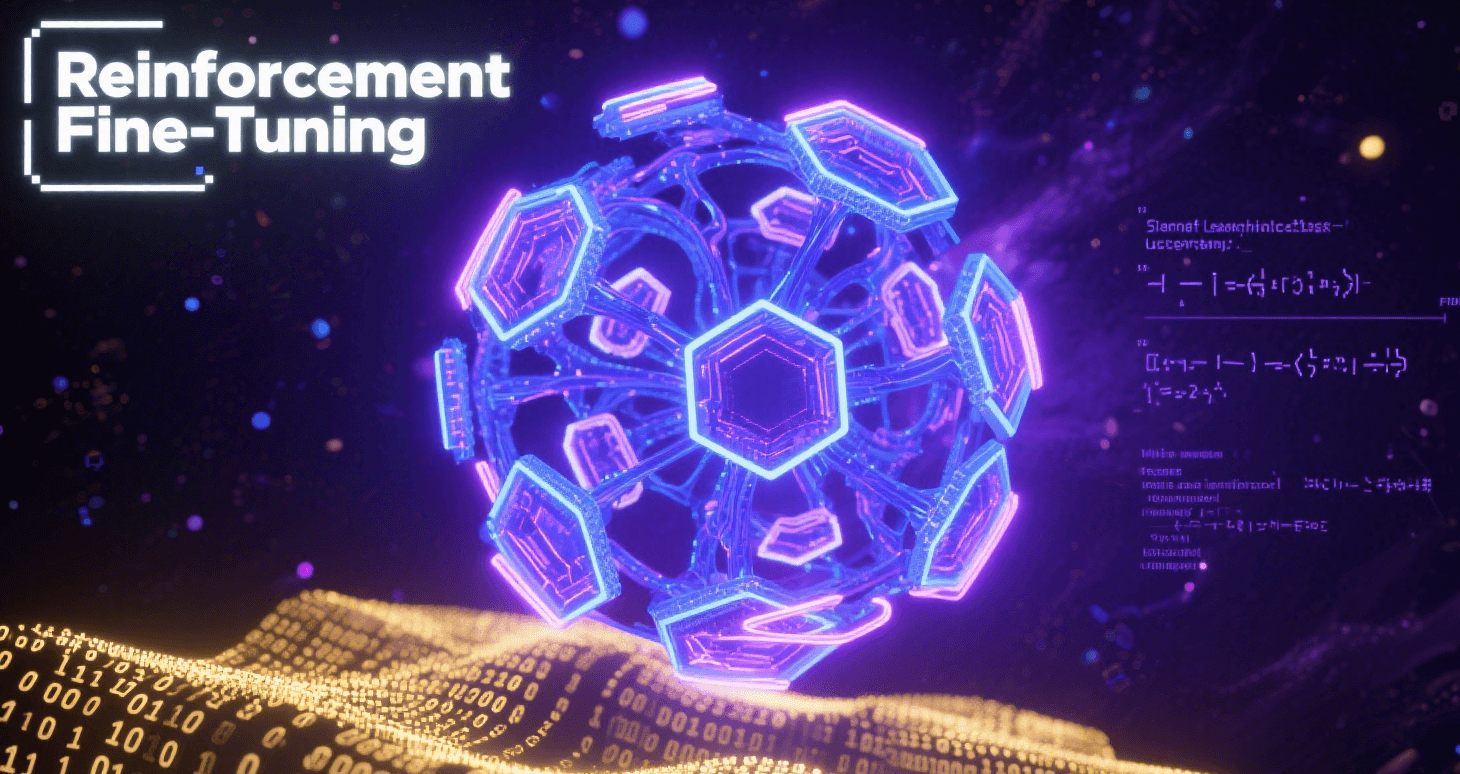In today’s fast-evolving world of artificial intelligence, reinforcement fine-tuning acts like an “intelligent upgrade system” for AI models. It helps them better understand human needs and tackle complex tasks more effectively. But how exactly does this technology work, and what new changes can it bring to AI?
Core Principle: Teaching AI Like Training a Pet
At its heart, reinforcement fine-tuning works a lot like training a pet—all thanks to “reinforcement learning.” Traditional AI training is like doing homework with strict answer keys, but reinforcement learning is more flexible. Think of it as teaching a puppy tricks: when the puppy (let’s call the AI system an “agent”) does something well (like shaking hands), the owner (the environment) gives a treat (a reward). If it messes up, there’s a gentle correction (a punishment). The puppy’s goal? Figure out the best way to get as many treats as possible (that’s its “strategy”).
Take language models, for example. The model itself is the “puppy,” the question you ask (and its context) is the “environment,” the model’s answer is the “action,” and your opinion of that answer is the “treat.” This approach is perfect for problems with no single “right” answer but still need to feel “right” to humans—like whether a response is polite or easy to understand.
Workflow: Six Steps to Build Smarter AI
1. Prepare Practice Questions
First, create a set of “practice questions”—a dataset of problems covering all kinds of scenarios in the target field. You also need clear standards to judge good vs. bad answers. It’s like a teacher making a test: mix easy and hard questions to really test what the “student” knows.
2. Let the AI Try Multiple Answers
Give the model one question and ask it to generate several different responses. For instance, if you ask, “How do I make milk tea?” the model might suggest using milk, non-dairy creamer, adding pearls, or using coconut jelly. This gives evaluators more options to compare later.
3. Human Evaluators Score the Answers
Have people rank or score these responses using specific criteria: Is the answer useful? Correct? Safe? Does it sound natural? For a cooking answer, you’d check if the steps are clear, the ingredients make sense, and if someone new could follow them.
4. Train a “Scoring Model”
Use these human scores to train a special “reward model.” This model acts like an automatic grader: feed it a question and an answer, and it gives a score showing how well the answer matches human preferences. During training, tweak its settings to make its scores match human judgments as closely as possible.
5. Let the AI Improve Itself
Using reinforcement learning algorithms, the original model uses the reward model’s scores to get better. It’s like a student adjusting their study habits based on a teacher’s feedback—constantly changing how it answers to get higher scores. One common tool, PPO, keeps changes small to stop the model from “getting confused.”
6. The Final Test
Test the improved model with “unseen questions”—ones it hasn’t trained on. This ensures it doesn’t just ace the practice test but can perform well in real life too.
Key Algorithms: Different “Teaching Styles”
1. Progressive Adjustment (PPO)
OpenAI uses this for GPT models. It’s like a step-by-step study plan: small changes at a time, so the model doesn’t get overwhelmed. This keeps it stable while making progress.
2. Direct Preference Learning (DPO)
This skips training a separate reward model. Instead, the AI learns human preferences directly—like a teacher saying, “This answer works better”—saving time and effort.
3. Reinforcement Learning from AI Feedback (RLAIF)
One AI acts as a “teacher” for another, giving feedback. It’s like students checking each other’s work: fewer human graders needed, lower costs, and more learning scenarios.
Why It Matters: Making AI More Human-Friendly
1. It Learns What Humans Value
Through repeated feedback, the model picks up on subtle human preferences—things hard to program into rules. For example, it learns to speak politely to elders or gently comfort someone—small touches that make interactions feel natural.
2. It Masters Specific Jobs
After fine-tuning, the model keeps its general skills but excels in specific fields. A medical AI might give accurate health tips, while a legal AI could parse laws and cases.
3. It Stays Reliable Long-Term
Instead of memorizing answers, it builds “core skills.” This means it stays consistent even with new topics or questions—no more “blanking out” when things change.
4. Fewer Bad Answers
By penalizing nonsense or harmful content, the model learns to avoid them. When it doesn’t know something, it says, “I’m not sure” instead of making things up.
5. Answers That Actually Help
The model gets better at guessing what you need—even if you don’t say it. Ask, “Where should I go this weekend?” and it might suggest hikes, cafes, or museums based on your location and hobbies—not just “the park.”
Reinforcement fine-tuning is like giving AI a “human radar.” With smart principles, clear steps, and flexible tools, it makes AI more useful and trustworthy. For AI enterprises looking to implement this technology efficiently, tools like WhaleFlux—an intelligent GPU resource management tool—play a crucial role. By optimizing multi-GPU cluster utilization, WhaleFlux helps reduce cloud computing costs while accelerating the deployment of large language models, which is essential for the smooth execution of reinforcement fine-tuning workflows. As technology advances, reinforcement fine-tuning will spread to more fields, turning AI into a true helper in daily life and work. Whether you’re using it professionally or just chatting, it’s set to make AI feel a little more like human.

